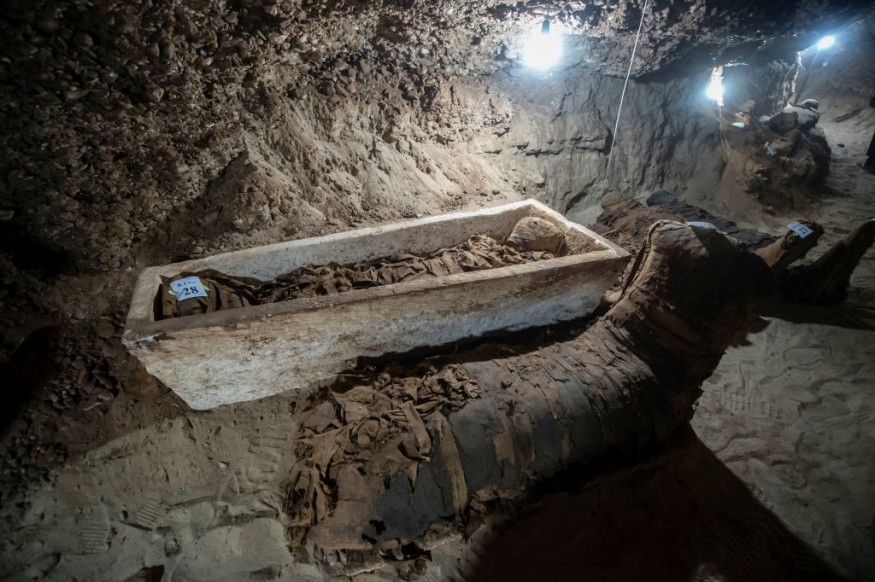
Experts have discovered an antiquity interment of a woman lying on a bronze mattress, located at the northern Greek metropolis of Kozani.
It was built during first century B.C.
The Discovery of 2100-Year-Old Burial
The observation tower was somewhere close to the northern Greek metropolis of Kozani and goes all the way back 2,100 years ago.
As per to the official statement of the researchers and experts working on the discovery, the photograph of a bird carrying a snake in its teeth on the woman's mattress represents the Greek god Apollo.
The timber components of the female's mattress have decayed as she was entombed centuries ago, according to Live Science.
The bed's posts are decorated with mermaids.
The duvet as well depicts a bird with a snake in its mouth, an emblem of the ancient Greek god Apollo.
Furthermore, Areti Chondrogianni-Metoki, chairman of the Ephorate of Antiquities of Kozani, has already told the media that the victim's head was protected in gold oak leaves, which were most probably part of an ornament.
The bed's timber components have decayed.
Gold strings, perhaps from needlework, were discovered on the woman 's palms, according to Chondrogianni-Metoki.
Further objects unearthed in the grave included four cooking pots and a crystal vase, however, no one else was interred with the woman.
Scientists examined the remains to determine the woman's maturity level, physical condition, as well as likely manner of morbidity.
Experts suspected the items they discovered showed that she hailed from a rich household, maybe a monarchy.
Scientists and researchers are currently examining the structural framework to establish the woman's wellness, average life expectancy, and likely cause of death.
The objects discovered with her indicate that she hailed from an affluent household but might have pledged allegiance to a ruling family.
Chondrogianni-Metoki told Flipboard in an interview concerning the discovery that as of the moment, researchers do not know enough about this area's chronology, which took place during the first century B.C.
The Bronze 'Mermaid Bed' of the Mummified Woman
Millions of years ago, Kozani was close an ancient city named Mavropigi, and then later on, the location has become a town that held a shrine devoted to Apollo, Chondrogianni-Metoki stated.
Written documents suggested that throughout the first century B.C., Roman dominance and authority in Greece was on the increase.
U.S. Time Post also reported that in 146 B.C., the Roman empire devastated Corinth.
In 86 B.C., they dismissed Athens.
Furthermore, in 48 B.C. The invasion force of Julius Caesar defeated a military means headed by Pompey in the Final showdown of Pharsalus in northern Greece; the landslide win ultimately resulted in Caesar gaining the de facto ruler of Roman empire.
It is unknown when in the first century B.C. this lady existed, as she would have seen or known about any of those momentous occurrences.
The woman's skeleton is presently on display at the Archaeological Museum of Aiani in Greece.
Live Science approached non-researchers for the additional information on the findings, and none have been accessible to respond at the period of publishing.
Related article : Cave in Spain Has Over 1,000 Prehistoric Wall Art by Ancient Humans 50,000 Years Ago
© 2025 NatureWorldNews.com All rights reserved. Do not reproduce without permission.





